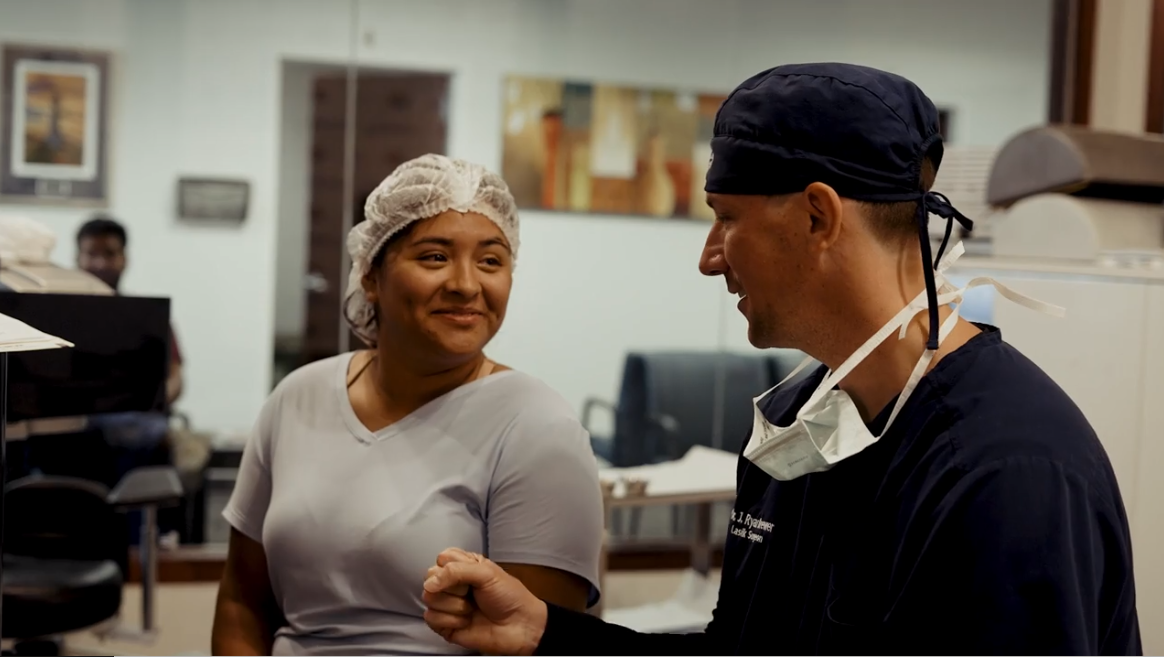- Microkeratome
A microkeratome is a mechanical surgical instrument that creates the corneal flap by carefully cutting a precise layer of corneal tissue. This is less commonly used today due to advancements in laser technology that offer greater precision. - Femtosecond Laser
Alternatively, a femtosecond laser, a highly precise and computer-controlled laser, can be used to create the corneal flap. This advanced technology offers greater precision and customization in flap creation. This is a required offering for qualification in the LASIK.com network as it is the recommended modern LASIK procedure.

What To Expect in a LASIK Procedure?
Before undergoing LASIK, patients undergo a comprehensive eye examination to assess their candidacy for the procedure.

Preoperative Evaluation
This evaluation includes measuring the prescription needed for vision correction, mapping the cornea’s topography, assessing the thickness of the cornea, and evaluating the overall health of the eye.
Eye Examination
A comprehensive eye examination to assess your current prescription, the overall health of your eyes, and any pre-existing eye conditions.

Corneal Mapping
The measurement of your corneal curvature and thickness. This information helps guide the surgical planning.

Pupil Size Measurement
Measurement of your pupil size in different lighting conditions, which can impact the treatment plan.

Tear Film Evaluation
Assessment of your tear film to ensure it is sufficient for a smooth healing process.

Medical History
Review of your medical history, including any medications you are taking and any previous eye surgeries or conditions.


Anesthesia and Medication
Anesthetic Eye Drops
On the day of the LASIK procedure, you will receive numbing eye drops to ensure that you do not experience pain or discomfort during the surgery.
Anxiety Medication (Optional)
For some patients who experience significant anxiety or nervousness about the procedure, anxiety or calming medication may be administered before the surgery. This medication helps alleviate stress and discomfort, ensuring a more relaxed experience.

LASIK Eye Surgery Procedure
The LASIK procedure typically follows these steps:
Dr. Louis Probst – LASIK.com Network Surgeon in Chicago, IL and Madison/Milwauee, WI shares what you can expect during a Modern LASIK procedure.
Watch LASIK.com Partner Surgeon, Dr. George Joseph in Dallas, Houston, & Fort Worth, TX, walks a patient through their Moden LASIK procedure real-time

Postoperative Care
Following the LASIK procedure, patients are provided with postoperative instructions and eye drops to aid in healing and reduce the risk of infection. Most individuals experience improved vision within a day or two, and visual acuity continues to improve over the following weeks
